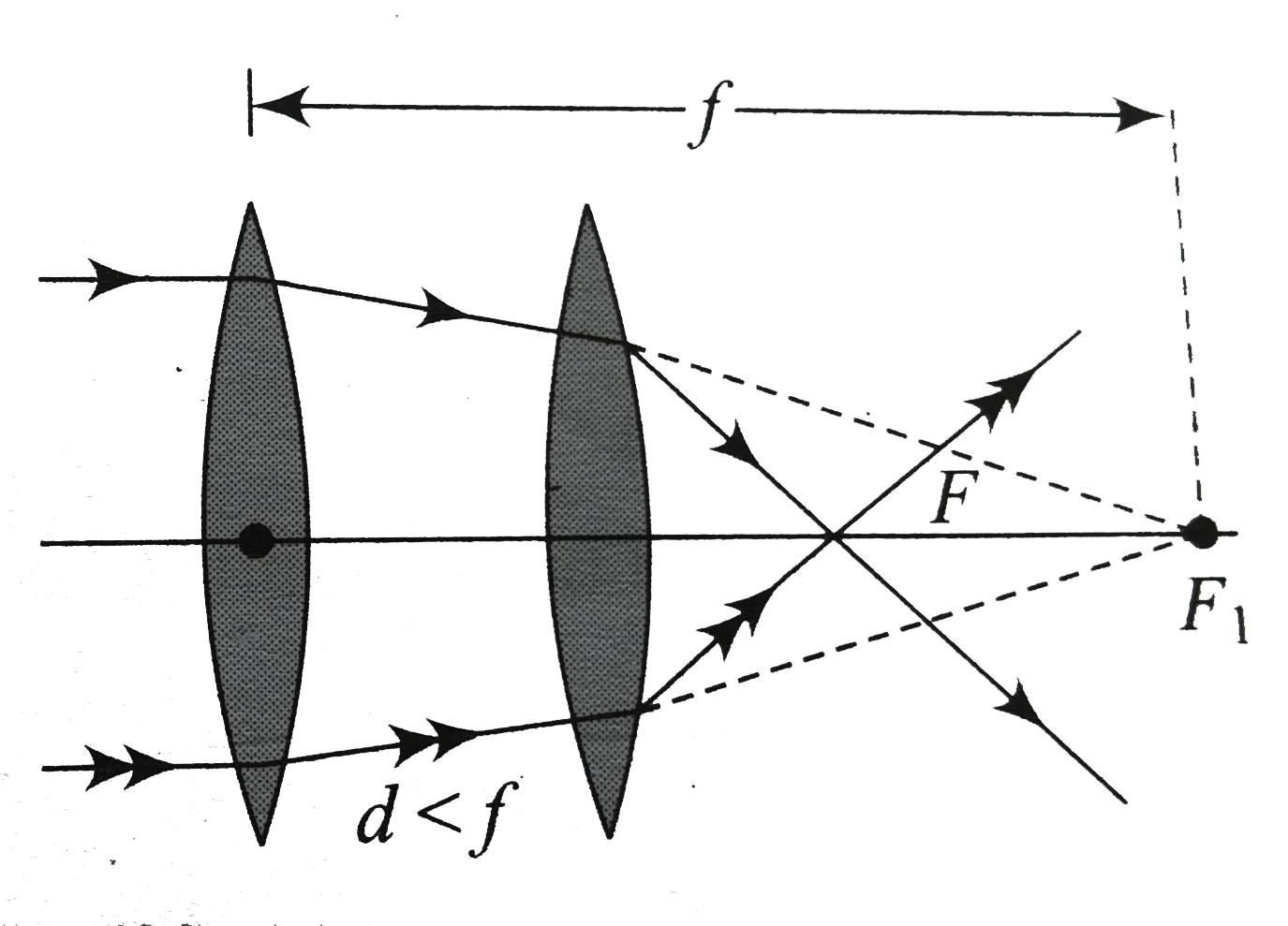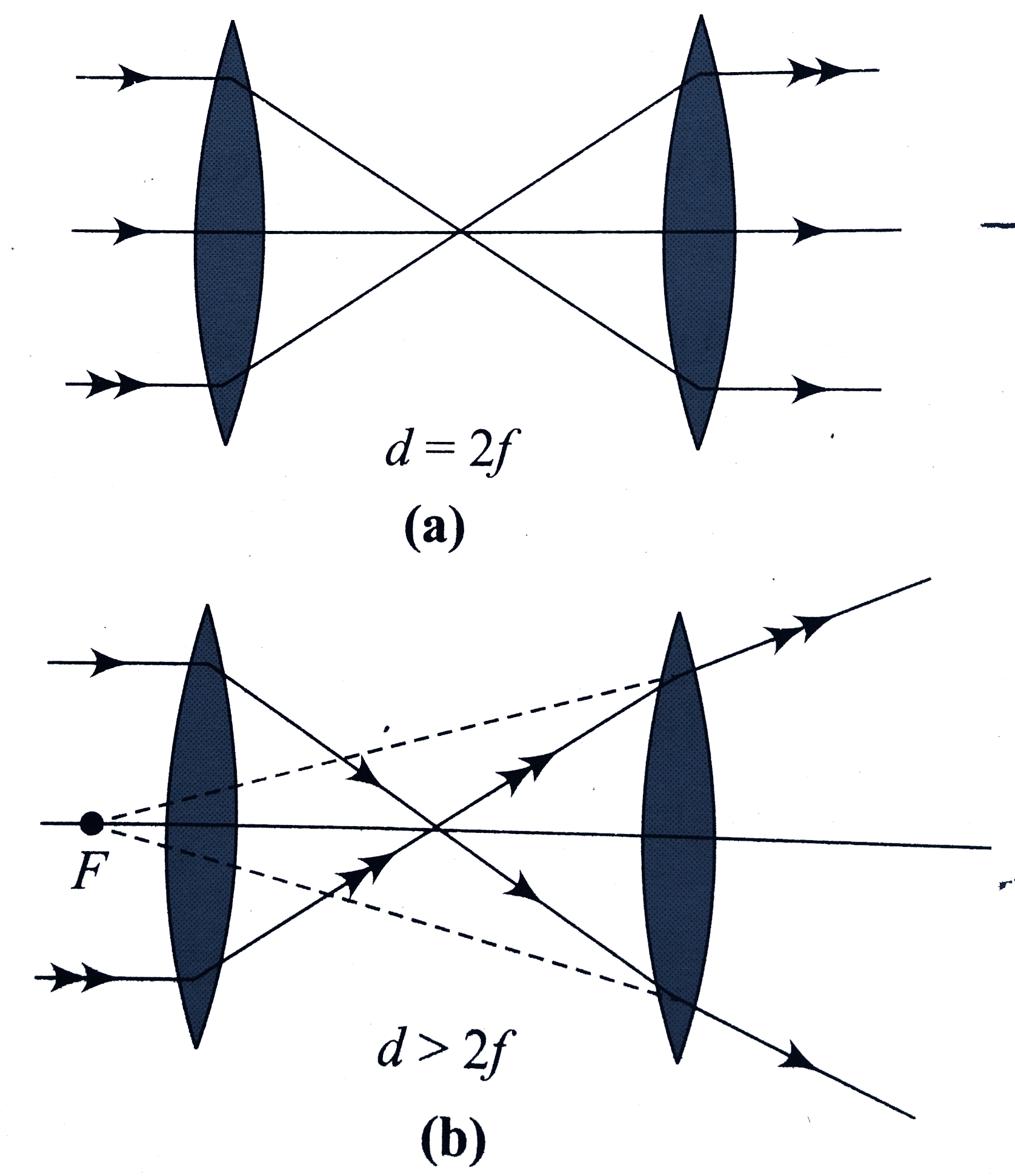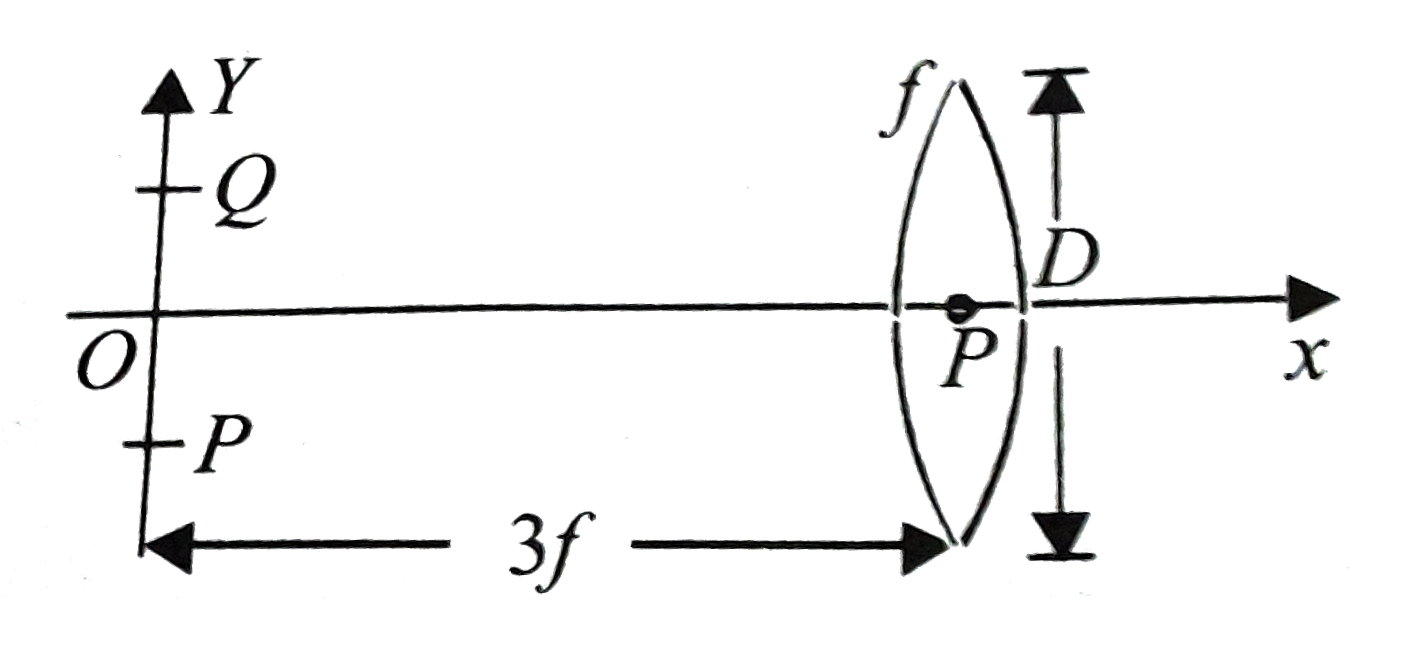Consider a coaxial system of two thin convex lenses of focal length f each separated by a distance d. Draw ray diagrams for image formation corresponding to an object at infinity placed on the principal axis in the following cases: (a) d<f,(b)d=f, (c ) f<d<2f, (d) d=2f, and (e) d>2f. Indicate the nature of the combination (concave, convex or plane) in each case.
In each of two thin lenses separated by a distance d, we have
1F=1f1+1f2−df1f2
For f1=f,f2=f,
1F=1f+1f−df2
F=f22f−d (i)
So, if d<f : F will be positive and >f. So, the system will behave as a convex lens of focal length<f as shown in Figure.
b. If d=f:F=f i.e., the system will behave as a convex lens of focal length f as shown in Figure
c. If f<d<2f : F will be positive and <f, so the system will behave as a convex lens of focal length >f as shown in Figure.
d. If d=2f : F will be indefinit, i.e., the system iwll behave as a plane glass plate of infinite focal length
If d>2f : F will become negative, i.e., the system will behave as concave lens as shown in Figure.




Topper's Solved these Questions
- BOOK - CENGAGE PHYSICS ENGLISHCHAPTER - GEOMETRICAL OPTICSEXERCISE - Solved Examples15videos
GEOMETRICAL OPTICS
- BOOK - CENGAGE PHYSICS ENGLISHCHAPTER - GEOMETRICAL OPTICSEXERCISE - Exercise1.114videos
GEOMETRICAL OPTICS
- BOOK - CENGAGE PHYSICS ENGLISHCHAPTER - ELECTRON,PHONTS,PHOTOELECTRIC EFFECT & X-RAYSEXERCISE - dpp 3.315videos
ELECTRON,PHONTS,PHOTOELECTRIC EFFECT & X-RAYS
- BOOK - CENGAGE PHYSICS ENGLISHCHAPTER - HEATING EFFECT OF CURRENTEXERCISE - Thermal Power in Resistance Connected in Circuit27videos
HEATING EFFECT OF CURRENT
Similar Questions
An object is placed at a distance of f2 from a convex lens of focal length f. The image will be
View SolutionTwo thin lenses of focal length f1 and f2 are in contact and coaxial. The power of the combination is
View SolutionA convex mirror has a focal length f. A real object is placed at a distance f in front of it from the pole produces an image at
View SolutionTwo thin lenses of focal lengths f1 and f2 are in contact. The focal length of this combination is
View SolutionTwo convex lenses of focal length 10cm and 20cm respectively placed coaxially and are separated by some distance d. The whole system behaves like a concave lens. One of the possible value of d is
View SolutionFind the nature of image when an object is placed at 2f from the pole of a convex mirror of focal length f
View SolutionAn object kept near a convex lens of focal length f, executes SHM between P and Q according to the equation y=Asinωt, O being the mean position. Take x-axis as the principal axis of the lens and A<<D to answer the following questions:

Q. The phase difference between the object and the image oscillations isView SolutionAn object is placed at a distance f in the front of a convex mirror. If focal length of the mirror is f, then distance of image from pole of the mirror is
View SolutionTwo charges spheres are separated at a distance d exert a force F on each other . If charges are doubled and distance between them is doubled then the force is a)F b)F/2 c)F/4 d)4F
View SolutionTwo charges spheres are separated at a distance d exert a force F on each other . If charges are doubled and distance between them is doubled then the force is a)F b)F/2 c)F/4 d)4F
View Solution
